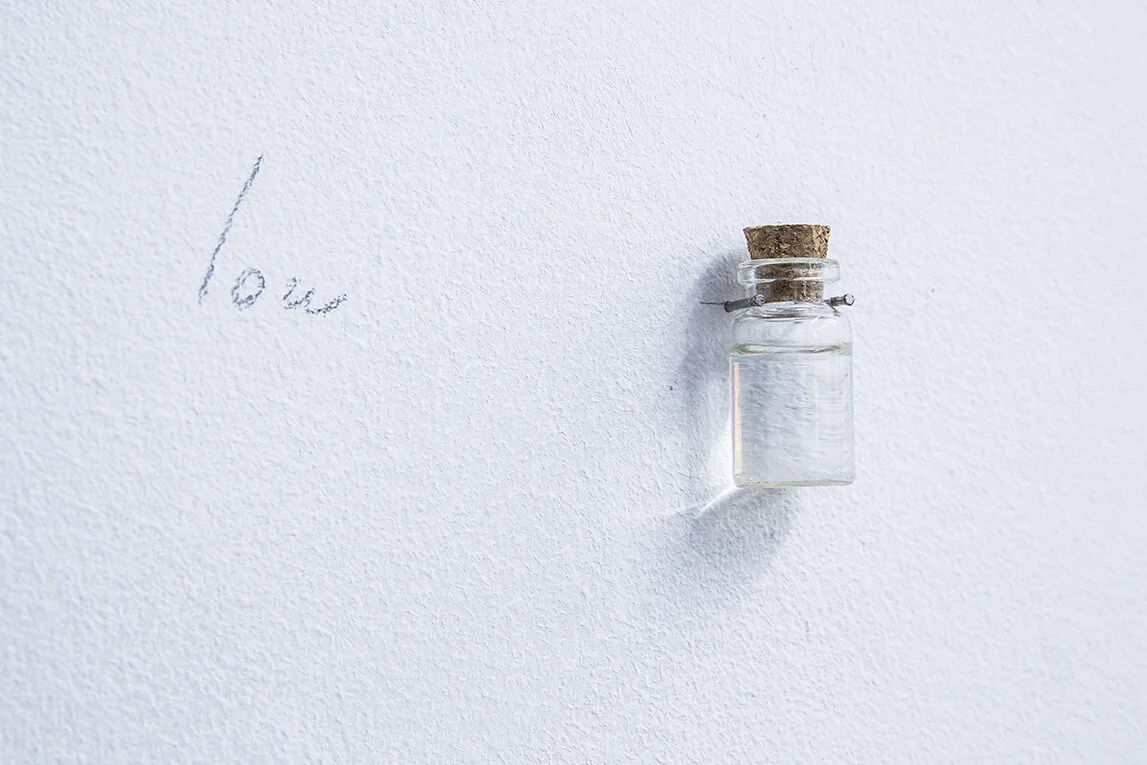What does it mean to try and ‘keep’ time? How do we experience and attempt to understand spatial and temporal changes? Does memory function chronologically, or do the past, present and future co-exist in the psychological realm?
Might we consider the present to be less of a single fixed point, and more like a wave – ever delayed, constantly unfolding, always in motion? If so, how do we measure the immeasurable?
interval (water logged)
These tiny bottles contain samples of the sea collected from the same point on the shoreline over different periods of time, including high and low tide. In some way serving as a kind of tidal clock they also measure how far we are prepared to go to try and preserve our experiences of the present forever, even if by doing so, we are forced to confine and reduce them into such basic components that they retain only trace differences between one moment and the other.
interval (land locked)
Gathered topography - these acrylic tubes contain samples of sand collected from different areas of the coastline around Margate. How far have these granules travelled from remote destinations to reach their current shared location, and what implications does this have for our definition of what it means to be ‘here’?
interval (surface preserved)
These photograms were created using a cameraless technique - they are simultaneously negative and positive - each one captures a unique fraction of a second. What does it mean to repeatedly document the moment the surface tension is broken? How many different repercussions can be formed by dropping the same water back into itself?


